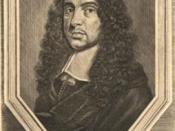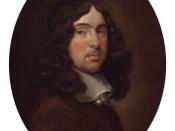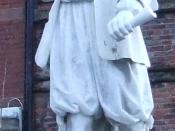In his poem The Nymph complaining for the death of her Faun Andrew Marvell puts allegory and classical allusion to work with great effect and I will show in this essay how he directs the reader to see the historical references he was alluding to. Andrew Marvell's father was a minister and Marvell would probably have heard allegorical interpretation on a daily basis as well as in sermons. Coupling this with his education I would suggest that he would have taken allegory in his stride. Marvell used classical allusion extensively in his works and linked it with allegory to point to his views on religious history as well as the events in his own period of time. It can also be seen clearly that the use of past and present tense throughout the poem helps to confirm the conveyance of feeling.
This poem appears to have been written in the tradition of Ovid's pastoral allegory.
Bruce King in his book Marvell's Allegorical Poetry comments:
Even if we were not aware of allegorisations of Ovid and the tradition of pastoral allegory, we would be forced by the pressure of Marvell's language to see a religious significance in The Nymph. (p. 47)
Some of the words used by Marvell point clearly to the religious significance suggested by King and some of these would be: "Pray'rs", "virgin", "Stain" and "holy". I would also suggest that not only can allegory be seen here but also classical allusion to Ovid and Virgil as well.
Marvell starts The Nymph in a manner that is abrupt and full of allusion. The first lines 'The wanton Troopers riding by/Have shot my Faun and it will dye./Ungentle men! They cannot thrive/ To kill thee.' (1-4.) can be read as the beginning of a tale of a girl grieving...


